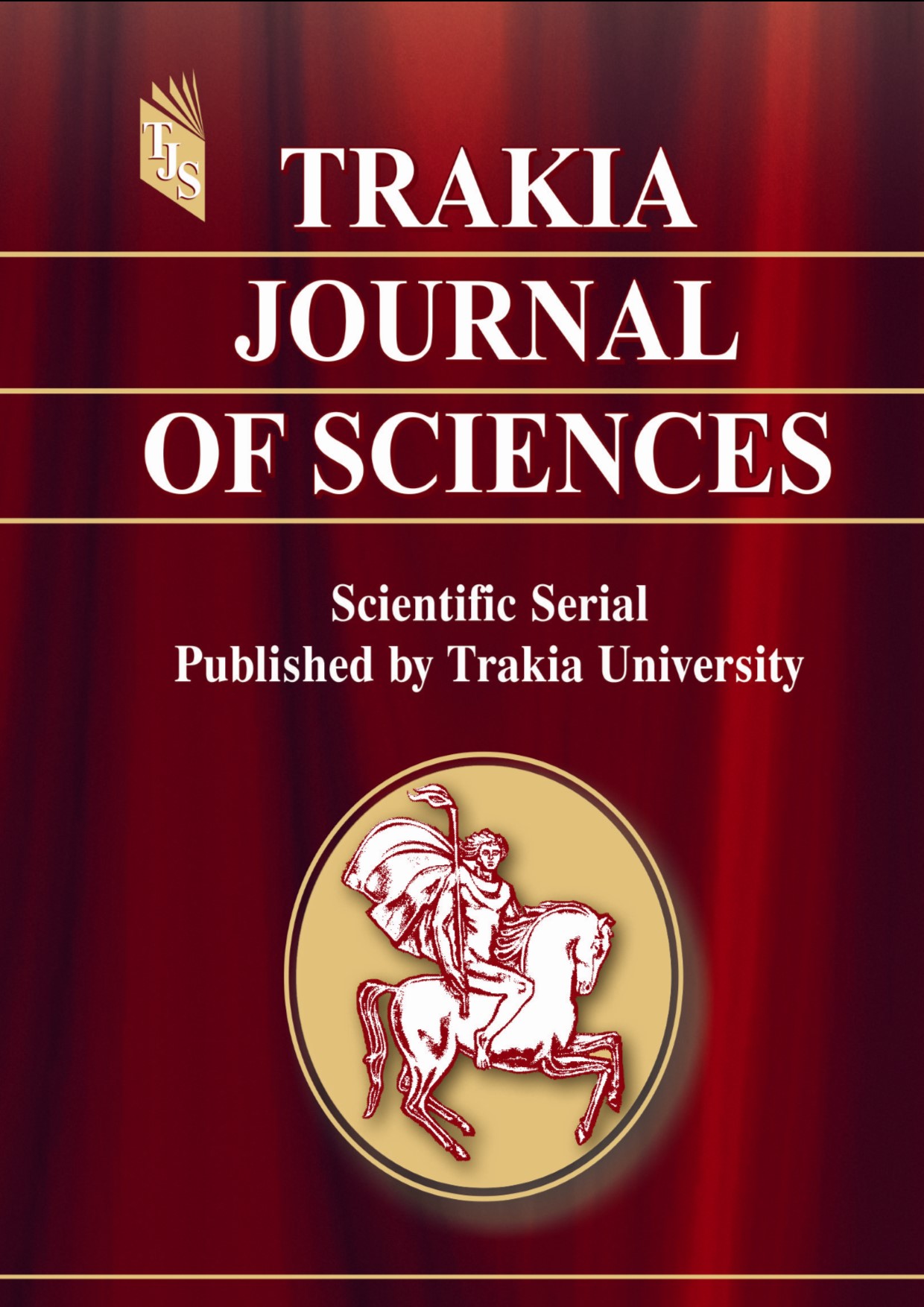USE OF ROBOT IN THE EDUCATION OF INDIVIDUALS WITH AUTISM SPECTRUM DISORDER
DOI:
https://doi.org/10.15547/tjs.2024.s.01.009Keywords:
Autism Spectrum Disorder, Technology, Robot, Teaching MaterialAbstract
OBJECTIVE: In this study, it was aimed to examine the importance of robot use in the education of individuals with autism spectrum disorder.
METHOD: This study was designed as a literature review since it was aimed to examine the importance of the use of robots in the education of individuals with autism spectrum disorder.
RESULTS: As a result of the literature review, it was observed that robots attract the attention of individuals with autism spectrum disorder, individuals with autism spectrum disorder prefer robots instead of playing with toys, they initiate social interaction with robots more easily, and they react to the instructions or signs of robots faster than human movement and instruction.
CONCLUSIONS: The use of robots in the education of individuals with autism spectrum disorder is certain to increase in the coming years. Because robots attract the attention of individuals with autism spectrum disorder and are observed to be effective. However, some research results indicate that the use of robots in the education of individuals with autism spectrum disorder is not effective. For this reason, more research results are needed in this field.
References
American Psychiatric Association. Diagnostic and statistical manual of mental disorders (5th ed.). American Psychiatric Publishing, 2013.
Fombonne, E., Epidemiology of autistic disorder and other pervasive developmental disorders. Journal of Clinical Psychiatry. 66:10, 3-8., 2005.
Şahbaz, Ü., Otizm spekturum bozukluğu (OSB). In: Şahbaz, Ü., (Eds).. Zihin yetersizliği ve otizm spektrum bozukluğu 2nd ed., Vize Yayıncılık. pp. 1-35, 2017.
Maenner, M. J., Shaw, K. A., Bakian, A. V., Bilder, D. A., Maureen, S. D, Esler, A., Furnier, S. M., Hallas, L., Hall-Lande, J., Hudson, A., Hughes, M. M., Patrick, M., Pierce, K., Poynter, J. N., Salinas, A., Shenouda, J., Vehorn, A., Warren, Z., Constantino, J. N., DiRienzo, M., Fitzgerald, R. T., Grzybowski, A., Spivey M. H., Pettygrove, S., Zahorodny, W., Ali, A., Andrews, J. G., Baroud, T., Gutierrez, J., Hewitt, A., Lee, Li-C., Lopez, M., Mancilla, K. C., McArthur, D., Schwenk, Y. D., Washington, A., Williams, S., Cogswell, M. E. Prevalence and characteristics of autism spectrum disorder among children aged 8 years—autism and developmental disabilities monitoring network, 11 sites, United States, 2018. MMWR. Surveillance Summaries, 722, 1–14, 2023.
Crumrine, D., Teaching safety skills to children with autism spectrum disorders: a comparison of strategies. (Doctoral dissertation). Wichita State University, United States., 2006.
Carothers, D. E., & Taylor, R. L., How teachers and parents can work together to teach daily living skills to children with autism. Focus on autism and other developmental disabilities, 19:2, 102-104. 2004.
Waligórska, A., Kucharczyk, S., Waligórski, M., Kuncewicz-Sosnowska, K., Kalisz, K., & Odom, S. L., National Professional Development Center on Autism Spectrum Disorders (NPDC) model—An integrated model of evidence-based practices for autism spectrum disorder. Psychiatria Polska, 53:4, 753–770., 2019.
Şen, N., Özel eğitimde insansı robotlar. Avrupa Bilim ve Teknoloji Dergisi, 32, 832-842., 2021.
Hockstein, N. G., Gourin, C. G., Faust, R. A., & Terris, D. J., A history of robots: from science fiction to surgical robotics. Journal of Robotic Surgery, 1:2, 113-118., 2007.
Ghallab, M. & Ingrand, F., Robotics and Artificial Intelligence. In: Marquis, P., Papini, O., Prade, H. (eds) A Guided Tour of Artificial Intelligence Research. Springer, Cham., 2020.
Beran, T. N., Ramirez-Serrano, A., Kuzyk, R., Fior, M., & Nugent, S., Understanding how children understand robots: Perceived animism in child–robot interaction. International Journal of Human-Computer Studies, 69:7-8, 539–550., 2011.
Papert, S., Mindstorms: Children, computers and powerful ideas. NewYork, NY: Basic Books., 1980.
Feurzeig, W., Educational technology at BBN. IEEE Annals of the History of Computing, 28:1, 18-31., 2006.
Barak, M. & Zadok, Y. Robotics projects and learning concepts in science, technology and problem solving. International Journal of Technology and Design Education. 19, 289–307. 2009.
Kahn, P. H., Jr., Kanda, T., Ishiguro, H., Freier, N. G., Severson, R. L., Gill, B. T., Ruckert, J. H., & Shen, S., “Robovie, you'll have to go into the closet now”: Children's social and moral relationships with a humanoid robot. Developmental Psychology, 48:2, 303–314., 2012.
Yıldız Durak, H., Karaoğlan Yılmaz, F. G., & Yılmaz, R., Robot tasarımı etkinliklerinin programlama öğretiminde kullanılmasıyla ilgili ortokul öğrencilerinin görüşlerinin incelenmesi. Ege Eğitim Teknolojileri Dergisi, 2:2, 32-43., 2018.
Mubin, O., Stevens, C. J., Shahid, S., Al Mahmud, A., & Dong, J., A review of the applicability of robots in education. Technology for Education and Learning, 1, 1-7., 2013.
Shimada, M., Kanda, T., Koizumi, S., How Can a Social Robot Facilitate Children’s Collaboration?. In: Ge, S.S., Khatib, O., Cabibihan, JJ., Simmons, R., Williams, MA. (eds) Social Robotics. ICSR 2012. Lecture Notes in Computer Science, vol 7621. Springer, Berlin, Heidelberg., 2012.
Chen, N. S., Quadir, B. & Teng, D.C., A Novel Approach of Learning English with Robot for Elementary School Students. In: Chang, M., Hwang, WY., Chen, MP., Müller, W. (eds) Edutainment Technologies. Educational Games and Virtual Reality/Augmented Reality Applications. Edutainment 2011. Lecture Notes in Computer Science, vol 6872. Springer, Berlin, Heidelberg., 2011.
Costa, M. F. & Fernandes, J., Robots at school. the eurobotice project. Proceedings of Hsci2005. http://www.clab.edc.uoc.gr/2nd/pdf/30.pdf, 2005.
Yildirim, N., & Sad, S. N., Ogretmenlerin Egitimde Insansi Robot Teknolojisini Kabul Duzeyleri. Mediterranean Journal of Educational Research, 13:30, 367-397., 2019.
Charlop, M. H., Dennis, B., Carpenter, M. H., & Greenberg, A. L., Teaching socially expressive behaviors to children with autism through video modeling. Education & Treatment of Children, 33:3, 371–393. 2010.
Salimi, Z., Jenabi, E., & Bashirian, S., Are social robots ready yet to be used in care and therapy of autism spectrum disorder: A systematic review of randomized controlled trials. Neuroscience & Biobehavioral Reviews, 129, 1-16., 2021.
Begum, M., Serna, R.W. & Yanco, H. A., Are robots ready to deliver autism interventions? A comprehensive review. International Journal of Social Robotics. 8, 157–181., 2016.
Dautenhahn, K., Robots as social actors: AURORA and the case of autism. Proceedings of the Third International Cognitive Technology Conference, August 11-14, San Francisco., 1999.
Robins, B., Dautenhahn, K., & Dubowski, J., Does appearance matter in the interaction of children with autism with a humanoid robot? Interaction Studies, 7, 509–512., 2006.
Pierno, A. C., Mari, M., Lusher, D., & Castiello, U., Robotic movement elicits visuomotor priming in children with autism. Neuropsychologia, 46, 448–454., 2008.
Gillesen, J.C.C., Barakova, E.I., Huskens, B.E.B.M. & Feijs, L.M.G., From training to robot behavior: Towards custom scenarios for robotics in training programs for ASD. 2011 IEEE International Conferance on Rehabilitation Robotics Rehab Week Zurich, 387-393., 2011.
Diehl, J. J., Schmitt, L. M., Villano, M. & Crowell, C. R., The clinical use of robots for individuals with Autism Spectrum Disorders: A critical review. Research in Autism Spectrum Disorders, 6:1, 249-262, 2012.
Huijnen, C.A.G.J., Lexis, M.A.S., Jansens, R. & de Witte, L.P., Mapping robots to therapy and educational objectives for children with autism spectrum disorder. Journal of Autism and Developmental Disorder, 46, 2100–2114., 2016.
Pioggia, G., Igliozzi, R., Sica, M. L., Ferro, M., Muratori, F., Ahluwalia, A., & De Rossi, D., Exploring emotional and imitational android-based interactions in autistic spectrum disorders. Journal of CyberTherapy & Rehabilitation, 1:1, 49-61., 2008.
Dalgın-Eyiip, Ö., Otizm spektrum bozukluğu olan çocuklara robot görünümüyle sunulan öğretimin ortak dikkat becerileri üzerindeki etkililiği [Unpublished Doctoral dissertation, Anadolu University]. (Turkey)., 2018.
Parker-Starbuck, J., Animal ontologies and media representations: Robotics, puppets, and the real of war horse. Theatre Journal, 65:3, 373-393., 2013.
Chang, J., Dietz, C., Marwaha, T., Roth, G., Gennert, M. A., Smith, G., & Ault, H., WPI robotic mascot. [Unpublished Doctoral dissertation, Worcester Polytechnıc Instıtute]. 2019.
Dautenhahn, K., & Werry, I., Towards interactive robots in autism therapy: Background motivation, and challenges. Pragmatics & Cognition, 12, 1–35., 2004

Downloads
Published
Issue
Section
License
Copyright (c) 2025 Trakia University

This work is licensed under a Creative Commons Attribution-NonCommercial 4.0 International License.


